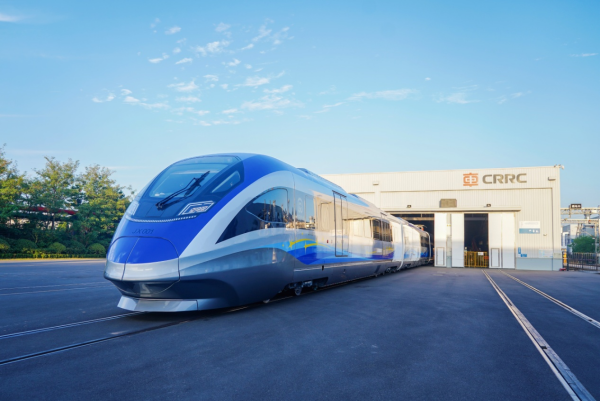On September 18, China unveiled its first standard smart commuter train, developed by CRRC Corporation Limited in Qingdao. Built under the concepts of intelligence, digitalization, modularization, sustainability, and integrated train–ground operation, the train marks a major breakthrough in China’s commuter rail transit equipment, with standardized smart trains entering demonstration applications.

China’s first standard smart commuter train, developed by CRRC Corporation Limited, made its debut in Qingdao on September 18. [Photo/sasac.gov.cn]
The new train will serve the Beijing–Xiong’an Express Line, reducing travel time between Xiong’an New Area and Beijing Daxing International Airport to 30 minutes, and to Lize Business District to 60 minutes.
According to Chief Designer Zhu Jianhua of CRRC Qingdao Sifang Co., Ltd., the train adopts a China-led standards framework, with 88 percent of its technical standards independently developed. It integrates more than ten new technologies, achieving comprehensive upgrades in intelligence, safety, comfort, energy efficiency, and operational economy.
Designed for a top speed of 200 km/h, it is China’s first fully automated commuter train at this speed and the fastest automated rail vehicle in the world. With self-sensing, self-learning, and self-decision-making control technologies, its operational failure rate has been reduced by over 95 percent. For the first time, hot-standby switching technology enables the train to automatically shift to a backup system in case of failure, ensuring uninterrupted service.
The train also enhances passive safety measures with advanced crash energy absorption devices, doubles its collision protection capability, and raises its crash safety speed to 36 km/h, the highest in its class. Optimized anti-slip braking shortens its stopping distances in wet or icy conditions, while advanced noise reduction materials and structures cut interior noise by 5 dB. Improved airtightness around doors and air conditioners reduces pressure fluctuations, greatly enhancing passenger comfort.
(Executive editor: Yuan Ting)